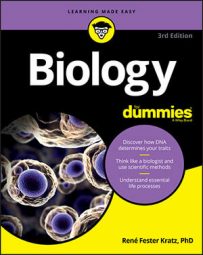-
Individuals in the population must produce more offspring than can survive. Human beings are somewhat unique among living things in that we can make conscious choices about how many offspring we have. Most other organisms, however, produce as many offspring as they can.
-
Those individuals must have different characteristics. During Darwin’s time, no one knew where these differences came from. Now scientists know that differences in organisms arise due to mutations in DNA combined with the mixing of genetic information during sexual reproduction.
-
Offspring must inherit some characteristics from their parents. During Darwin’s time, the laws of inheritance were just beginning to be figured out, so Darwin didn’t know exactly how parents passed on their traits. Modern scientists know that traits are inherited when parents pass genes on to their offspring.
-
Organisms with the best-suited characteristics for their environment are more likely to survive and reproduce. This is the heart of natural selection. If there’s competition for survival and not all the organisms are the same, then the ones with the advantageous traits are more likely to survive. If these traits can be inherited, then the next generation will show more of these advantageous traits.

